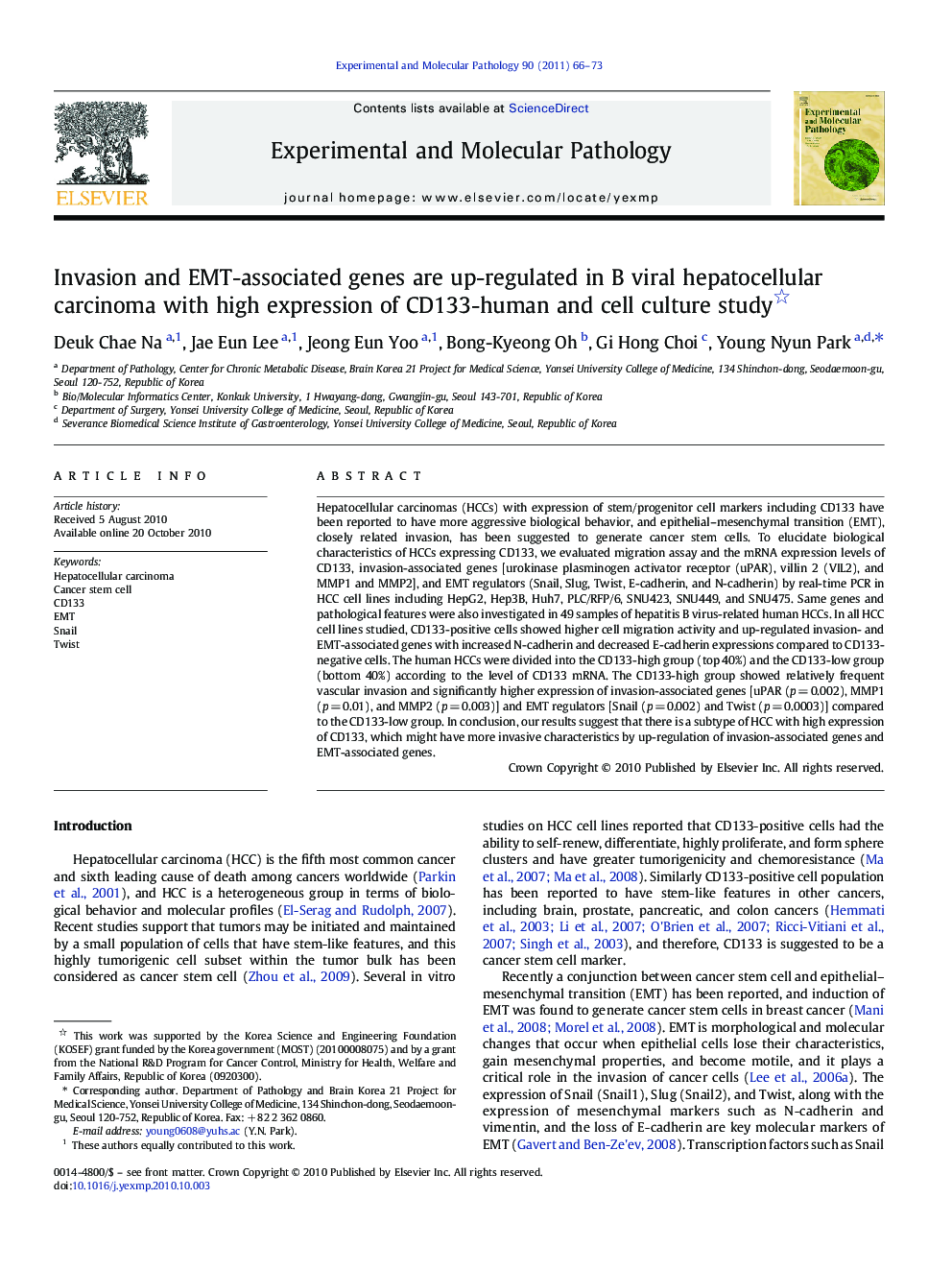| کد مقاله | کد نشریه | سال انتشار | مقاله انگلیسی | نسخه تمام متن |
|---|---|---|---|---|
| 2775528 | 1152331 | 2011 | 8 صفحه PDF | دانلود رایگان |

Hepatocellular carcinomas (HCCs) with expression of stem/progenitor cell markers including CD133 have been reported to have more aggressive biological behavior, and epithelial–mesenchymal transition (EMT), closely related invasion, has been suggested to generate cancer stem cells. To elucidate biological characteristics of HCCs expressing CD133, we evaluated migration assay and the mRNA expression levels of CD133, invasion-associated genes [urokinase plasminogen activator receptor (uPAR), villin 2 (VIL2), and MMP1 and MMP2], and EMT regulators (Snail, Slug, Twist, E-cadherin, and N-cadherin) by real-time PCR in HCC cell lines including HepG2, Hep3B, Huh7, PLC/RFP/6, SNU423, SNU449, and SNU475. Same genes and pathological features were also investigated in 49 samples of hepatitis B virus-related human HCCs. In all HCC cell lines studied, CD133-positive cells showed higher cell migration activity and up-regulated invasion- and EMT-associated genes with increased N-cadherin and decreased E-cadherin expressions compared to CD133-negative cells. The human HCCs were divided into the CD133-high group (top 40%) and the CD133-low group (bottom 40%) according to the level of CD133 mRNA. The CD133-high group showed relatively frequent vascular invasion and significantly higher expression of invasion-associated genes [uPAR (p = 0.002), MMP1 (p = 0.01), and MMP2 (p = 0.003)] and EMT regulators [Snail (p = 0.002) and Twist (p = 0.0003)] compared to the CD133-low group. In conclusion, our results suggest that there is a subtype of HCC with high expression of CD133, which might have more invasive characteristics by up-regulation of invasion-associated genes and EMT-associated genes.
Research Highlights
► CD133 is one of stem/progenitor cell markers of the liver.
► In CD133-positive HCC cells, invasion- and EMT-associated genes were up-regulated and migration activity was high.
► HCC patients with high CD133 expression showed up-regulation of uPAR, MMP1, MMP2, Snail, and Twist and frequent vascular invasion.
► Thus, this HCC subtype considered to have more invasive characteristics.
Journal: Experimental and Molecular Pathology - Volume 90, Issue 1, February 2011, Pages 66–73